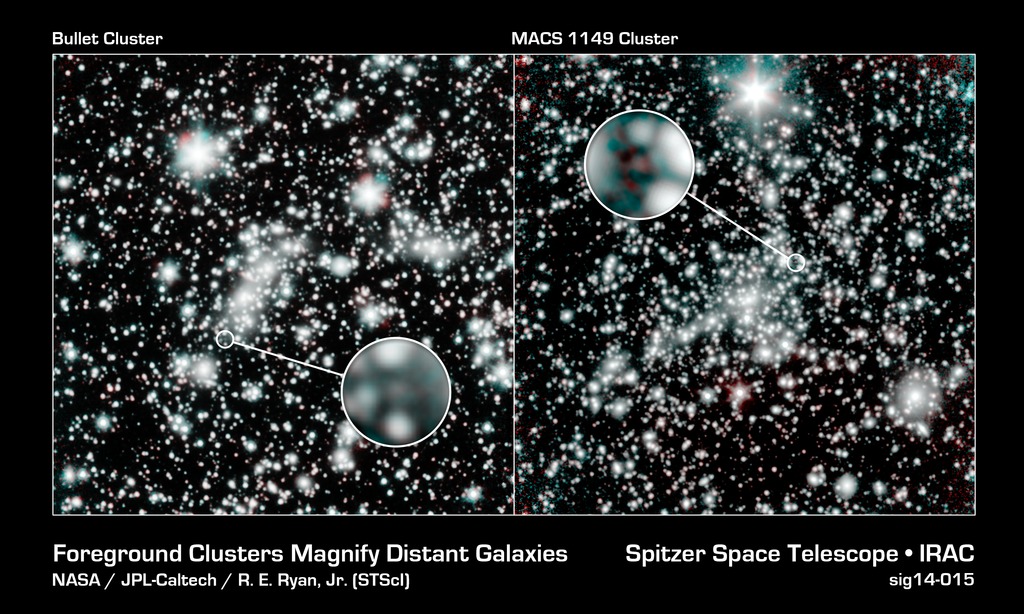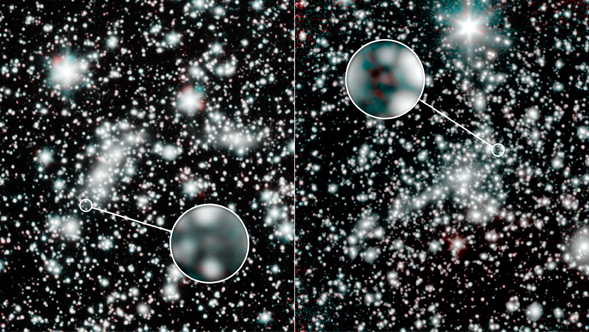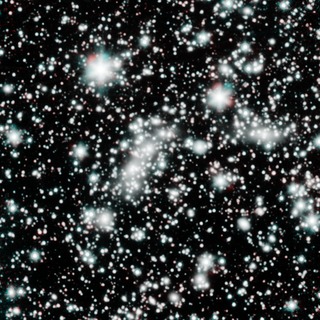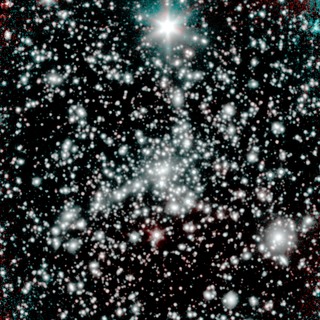
Collage • June 12th, 2014 • sig14-015
sig14-015
NASA's Spitzer Space Telescope has teamed up with the Hubble Space Telescope to conduct the Spitzer UltRaFaint Survey, or SURFS UP. The joint project is catching sight of a "wave" of galaxies that emerged in the early universe. Starlight from these primordial galaxies is reckoned to have cleared a fog of hydrogen gas that shrouded the cosmos during a mysterious period known as the Dark Ages.
SURFS UP will image 10 massive, foreground galaxy clusters, whose strong gravity magnifies the light of background objects. This so-called cosmic lensing causes objects such as the distant, dim, young galaxies that SURFS UP is investigating, to appear more than 10 times brighter than they normally would, allowing the team to study the stars within them.
This image exhibits the magnifying effects of two of the galaxy clusters, the Bullet Cluster and MACS 1149. The zoom-in circles show ultra-distant galaxies that SURFS UP has revealed. The overall reddish hue of starlight visible to Spitzer in these distant galaxy indicates that the stars in these young galaxies are already mature. The findings therefore push back the time when the first stars and galaxies arose and began illuminating the Dark Ages.
The Spitzer observations, in infrared, reveal key characteristics, such as mass and ages, about older populations of stars in the far-off galaxies. Besides finding the galaxies in the first place, Hubble's observations, in visible light, speak to the formation rate of young stars. Taken together, the data paint a richly detailed portrait of galactic evolution and its effect on the wider cosmos.
These Spitzer observations at wavelengths of 3.5 and 4.6 microns are shown in blue and red, respectively. They were obtained during Spitzer's warm mission phase, following the depletion of its liquid coolant in 2009.
About the Object
- Name
- Bullet Cluster • MACS 1149
- Type
- Galaxy > Grouping > Cluster
- Cosmology > Phenomenon > Lensing
Color Mapping
| Band | Wavelength | Telescope |
| Infrared | 3.6 µm | Spitzer IRAC |
| Infrared | 4.5 µm | Spitzer IRAC |







